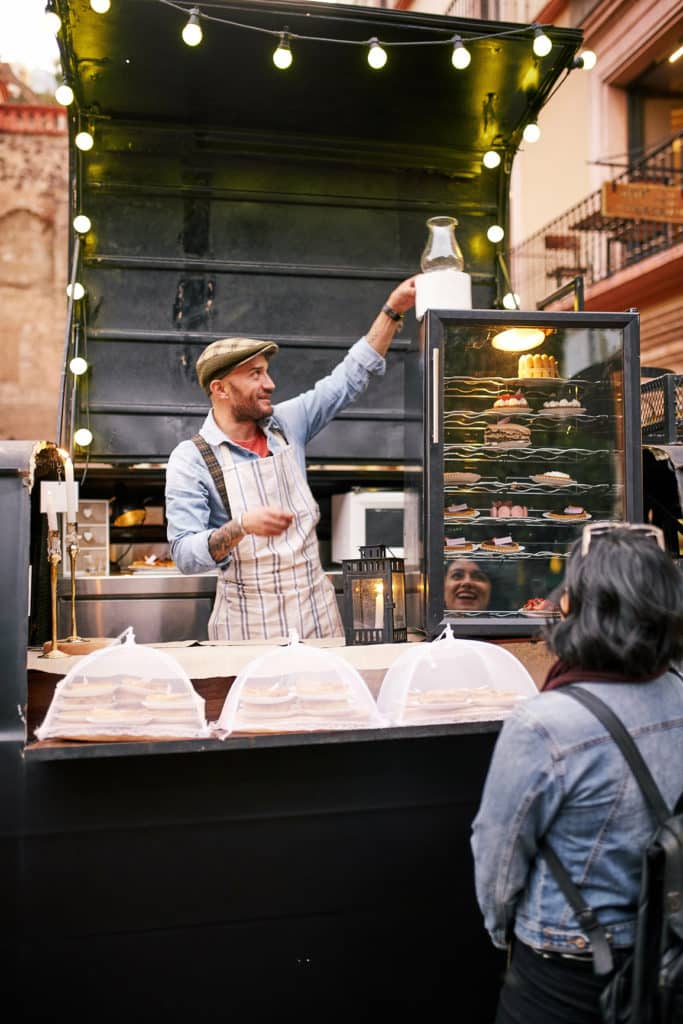Take out your pen and paper (or, let’s be real, your “Notes” app) because, if you are heading to Mexico, you’ll want to commit these Mexican slang terms to memory.
Yes, it’s common courtesy to learn some language before you travel, and that’s definitely the case when you travel to Mexico, but your high school Spanish may be rusty. Or you may know Spanish expressions that are more Castilian than Mexican, so they are better suited to Seville than San Luis Potosí.
You see, there are a lot of terms that are used in everyday life in Mexico that are distinct from the country itself, and it’s helpful to know them before you travel there.

15 Of The Most Common Mexican Slang Words
Yes, there are numerous articles on the web covering Mexican slang, but they mostly share curse words. Rather, this is a selection of the most useful words for international travelers visiting Mexico.
Some you’ll hear in everyday conversation, while others focus more on food and travel because that’s what we’re all about here! From güey, and no manches to ósea and more, here are 15 Mexican slang terms to know.
Güey
Chances are you’ve heard this word before because “güey” — sometimes also spelled “wey” — is used all over Mexico. Güey translates to “dude” or “mate” in English and is mostly used amongst friends. It’s so common that we’d venture to say most Mexicans say it at least once per conversation.
For example: “Hola, güey cómo te fue ayer en la fiesta?” translates to “Hey dude, how was yesterday’s party?”
The word güey could also be used when referring to strangers or talking about someone else, for example, “El wey de la tienda me dijo…” as in “The guy at the store told me…”
No Manches
There is perhaps no phrase more quintessentially Mexican than “no manches.” This extremely versatile phrase is used to react to unexpected news, be it for something amazing (or not so amazing) or something unbelievable. It best translates to “Really?” or “Are you kidding?” though we would add an “OMG” to make it more precise, as in, “OMG really?” When traveling, you’ll hear “no manches” used to react to travel time.
For example, a driver might say, “Faltan 3 horas para llegar al destino final,” meaning, “We have three hours left to get there.” A common way to react would be saying, “No manches! Pensé que faltaba menos.” which translates to “Really? I thought we were almost there.” Locals use the word constantly, so you’ll likely hear it in various contexts.
Ósea
Like “No Manches” another expression used a ton is “Ósea,” which Mexicans use as a filler much in the way Californians use “like.” It’s worth noting that “Ósea” has a more traditional use too. It’s a legitimate expression to further explain yourself, which best translates to “in other words.”
When used in its more classic manner, it’s a really helpful expression; however, when used as a filler, it quickly gets annoying, like “I mean,” “you know,” or “like” in American English.

¿Mande?
The term “¿Mande?” is a very polite way to ask someone to repeat themselves. For example, if you can’t hear someone or don’t understand what they said, you can reply with “¿Mande?” Using this term indicates “unfamiliarity,” and the person will most likely repeat his or her previous statement. “¿Mande?” can be translated to “Can you repeat that?” or to “Excuse me?”
For example, “¿Mande? No escuché lo que dijiste.” would translate to “Excuse me, I didn’t get that.”
Que Padre
On your travels to Mexico, you’ve likely heard someone say, “Que padre!” You may have even entered the term into Google Translate and been given the literal translation of “that father,” which makes zero sense, given the use. In Mexico, “que padre” is used to say something is cool or awesome or to respond to good news.
For example, when someone says, “Mañana va a ser un gran día para ir a la playa, va a hacer mucho sol” – “Tomorrow will be a perfect day to go to the beach, the sun will be out all day.” you could respond with “¡Que padre!”
Chido
If you hang around Millennials or Gen Zers in Mexico, you’ll hear the word “chido” multiple times because they frequently use this word as a synonym for “que padre” or, in English, “cool” or “awesome.” Millennials might be the ones who use the word the most, but this doesn’t mean that older people don’t use the word. Chido is a modern word that indicates something is awesome.
For example, “El mar en México está chido.” would mean “Mexico’s ocean is cool”.
Pachanga
If you know anything about Mexican culture, you’ve probably gathered that Mexicans like to celebrate any and everything, and we’re known for partying hard. In Mexico, the word “pachanga” is a synonym for “party.” You might hear locals ask, “¿Dónde es la pachanga hoy?” which means, “Where’s the party today?”
As a traveler in Mexico, you might be looking for the right places to party; keep an eye out for the word “Pachanga,” and you’ll probably find some good spots. You can also include the word when asking locals about the best spots to party.
For example (now that you know how to use “que padre”), you could say, “¿Dónde está más padre la pachanga?” to say, “Where’s the coolest place to party?”
Caballito
Now that we’re talking about partying and having a good time, let’s discuss shots! Ask the bartender for tequila in a caballito, and you’ll get a shot of tequila because in Mexico, the word “caballito” is used in reference to shot glasses. You can order tequila, but if you don’t ask them to put it in a “caballito” you’ll probably get it in a normal-sized cup. In most of Mexico, you can also use the word “shot,” and they’ll understand.
For example, “Me das un shot de tequila por favor?” to “Can I please have a shot of tequila?” However, if you want to sound more like a local, you can say: “Me das un caballito de tequila, por favor?” which translates to “Can I please have a shot of tequila?”
Un trago
Having tequila shots in Mexico is fun, but what about having “tragos?” In Mexico, “Vamos a echar un trago” translates to “Let’s go out and have some drinks.” You probably don’t want to order nor ask the server at a restaurant for a drink using the words “un trago” since these words are most likely to be used between friends or in a party environment.
For example, you could hear “Quieres un trago?” or “Vamos por un trago?” from a friend or someone else at a bar, which would translate to “Do you want to go get a drink?”
“Cheve” and “Chela”
“Cheve” and “Chela” are slang words for “cerveza” or “beer,” and they’re used informally with friends and family, usually in a social setting. FYI, “cheve” is more common in Northern Mexico, while “chela” is more commonly used in central and southern Mexico.
It is unlikely to hear locals or foreigners referring to a beer using the word “cheve” or “chela” at a bar or restaurant, especially not in a formal setting. However, frequent customers might as well use the word if there’s a bond between themselves and the restaurant’s staff.
“Salud” and “Provecho”
Besides wanting to celebrate every occasion Mexicans also like to cheer and make a toast at every meal. The most common way of doing it is by saying “Salud” and raising your drink, this is the same as saying “cheers” in the States. You can also say “Provecho” or “Buen Provecho” right before starting a meal which would translate to “Enjoy your meal.”
Crudo
If you indulge in too many shots, you might use the word “crudo” to describe how you feel the next day. Google Translate will spit out the literal definition of “raw” but, in Mexico, it’s used to say you have a hangover.
You would say “Tome demasiado ayer, estoy crudo” to say “I drank too much yesterday, I’m hungover.”
Chin
Things won’t always go as expected, and a common reaction word would be “chin” or “darn.” For example “Chin! Se me cayo mi vaso” which would translate to “Darnit! I dropped my glass.”
Gringo
Don’t feel offended if locals call you a “gringo.” Pretty much anyone who doesn’t “look Mexican” may be called a “gringo” or “gringa.” While people from the United States sometimes get offended when referred to as “gringos” the reality is that in Mexico, the word is not generally considered an insult!
Ahorita
The word “ahorita” can be confusing even for Mexicans. The literal translation of “ahorita” is “right now;” however, Mexicans are not the best with punctuality so when they say “ahorita” it might mean “in a couple of hours” or “later.”
For example “Ahorita llega el camión, primero va a pararse por gasolina.” would mean, “The bus will arrive right now, it will stop for gas first.” Here the word “ahorita” indicates that an event is about to happen though it could take anywhere from a few minutes to a few hours.
Frequently Asked Questions
Popular Mexican slang terms include "¡Qué padre!" (That's cool/awesome!), "Chido" (Cool or nice), "Güey" (Dude or guy, also spelled "wey"), "Chamba" (Job or work), and "Mande" (What did you say? or Yes?). These expressions are widely used in casual conversation among locals.
Yes, Mexican slang can vary significantly across different regions and states in Mexico. Each area may have its unique expressions and usages, reflecting local culture and traditions. Learning the local slang when visiting different parts of Mexico is always interesting.
Tourists can use Mexican slang to connect with locals and immerse in the culture. However, it's important to understand the context and use slang appropriately, as some terms may be offensive or misunderstood if used incorrectly.

How To Best Use Mexican Slang
A quick note: we are generally against using slang when speaking a foreign language unless you have great language skills. The reason is it’s jarring to hear someone speak slang and make many grammar errors. So, while, as a Mexican myself, I’m all about you embracing our culture, using too much slang will simply make it harder for you to be understood.
Even so, we encourage you to learn some common slang because it will help you follow conversations. As such, we’re giving you the answers that Google Translate simply can’t accurately translate and providing definitions of real-world, commonly used Mexican slang.
Get A Personalized Travel Itinerary

Travel Tips for Mexico
Heading to Mexico soon? Check out these Mexican travel tips so you know common customs, from when to tip and how to greet people.
Have Us Plan Your Mexico Travel
Did you know we’re also a boutique travel agency specializing in Mexico travel planning? If you’re looking to plan one of the best trips to Mexico, our Mexico trip planner services are here to help you plan your perfect itinerary.
Photo Credit: Opening photo by Jezael Melgoza other photos by Per Swantesson